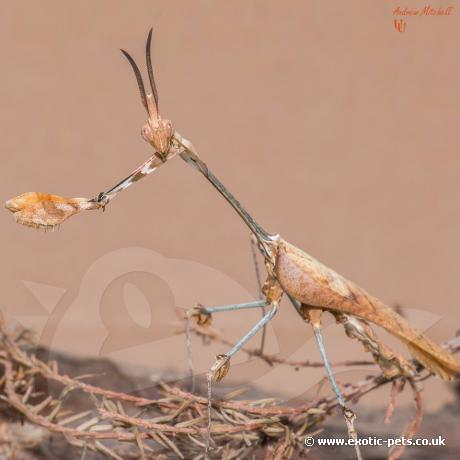

This has to be one of the strangest and bizarre looking Mantids there is!
This has to be one of the strangest and bizarre looking Mantids there is!
They look very fragile due to their 'Prothorax' (neck), being very elongate and narrow. As it reaches the head, just above the arms, it widens slightly into a diamond shape. Their eyes seem to be pointed, with a leaf like shape that sits between the antennae on top of its head. On the abdomen and walking legs, lobes are present.
Their colour varies between different shades of browns. When adults, the males are smaller and slender than females, like with most species - Males are 85mm where as females are more like 110mm in length. Males can fly well where as females can not - the wings of the females only cover a quarter of the abdomen!
They are found in Southern India and Sri Lanka. This species likes the warmth, so you must keep them at 30-40C (86-104F). They have been known to survive in temperatures reaching up to 60C (140F). Spray them in short durations approx. three times a week. You want the Humidity to be in the range of 40-50%
This is not an ideal species for your first Mantis! You must buy a heat mat/pad to keep the temperature high. Feeding can be difficult as they like to eat flying insect i.e. flies, moths, butterflies etc. If feeding crickets etc. the food should be able to reach the Mantids. They will not run after the food, it must walk right pass them before they will attack it. A tall net cage is needed with plenty of sticks and greenery, but don't over crowd it!
You can keep a large number of these together. Provide them with plenty of flying insects and space and they very rarely attack each other. This is a lovely species to keep together!